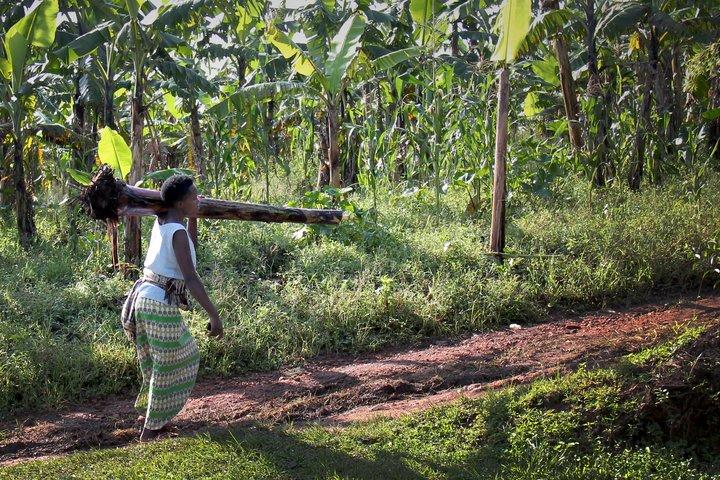New guide for producing clean banana planting material now available

The illustrated guide, developed by Bioversity International and partners and available in four languages, details useful, alternative practices to achieve higher banana yields and minimize the risks of transmitting insect pests and diseases.
In banana producing regions around the world, men and women and even children can often be spotted carrying banana suckers – the shoots from the mother plant extracted to plant new fields. Every year rural households plant or replant fields of bananas, using more than 20 billion suckers.
Bananas propagate vegetatively without any role for pollination, seeds or spores. The pseudostem bearing the bunch generates between 3-10 sprouts at the base. The farmer allows only one or two of these suckers to grow into new pseudostems each producing a bunch, while the others are destroyed or can be dug up and carried to a new field for planting.
Banana farmers who use clean and good-quality planting material can achieve higher yields and minimize the risks of transmitting insect pests, fungal and bacterial diseases and viruses. Planting material infected with pests and diseases can result in yield losses in the first harvest of 20-100% and can reduce the number of harvests by 50% or more.
Obtaining sufficient clean planting material is a big challenge to smallholders, because each year they may need not just five or ten suckers, but hundreds to thousands. If only 10-20% of the planting material is infected, pests and diseases quickly pass to healthy plants, reducing both bunch size and the number of harvests. Some diseases, such as banana bunchy top virus and Fusarium wilt, are lethal and new plantings with infected suckers will produce nothing.
A new illustrated guide developed by Bioversity International and partners, summarizes the key practices for producing clean banana planting material of banana with a high-yield potential.
The guide – available in English, French, Spanish and Arabic – also provides useful information to better planning the propagation of planting material for rural development and disaster relief projects. A summarized version of this manual, specifically targeting smallholder producers, is available in the form of illustrated field sheets with photographs. Descriptions and explanations of the different methods can be translated in the local languages or dialects.
The development and production of this guide was supported by the Austrian Development Agency, the Common Fund for Commodities, the Deutsche Gesellschaft für Internationale Zusammenarbeit (GIZ), the CGIAR Research Program on Roots, Tubers and Bananas, and USAID through the TARGET project.
Download the guide here
Photo: Woman carrying banana sucker, Uganda. Credit: Bioversity International/N.Capozio
